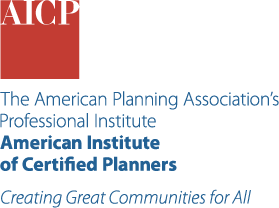Uncovering JAPA
Eliminating Owner-Occupied Restrictions for Missing Middle Housing

Without zoning reforms that allow for increased neighborhood density, housing affordability issues will likely persist in U.S. cities. The concept of missing middle housing has emerged as a central thrust of the zoning reform movement. Middle housing is denser residential housing than typical single-family homes but not as large as an apartment complex.
Development options range from duplexes to townhouses to six-plexes. Resistance to middle housing remains strong, not only among NIMBY neighbors but also among justice-oriented neighbors, especially around the potential for gentrification and corporate incursions into residential areas. Can these fears be assuaged by studying past zoning reforms?
In "'Missing' No More: Planners Should Harness Private Developers to Build Middle Housing" (Journal of the American Planning Association, Vol. 91, No. 2) Nicholas J. Marantz and Jake Wegmann uses examples from three cities to demonstrate how single-family zoning reform and collaboration with private developers can lead to more affordable housing options and reduce housing inequalities.
Building Middle Housing
Single-family zoning reform to promote middle housing should be considered a strategy for addressing housing unaffordability. In recent years, several state and local governments have adopted laws allowing for middle housing on parcels previously zoned exclusively for detached single-family development.
However, many of these laws only allow current occupants to redevelop their parcels. As Marantz and Wegmann explain, this feature of the laws undermines their effectiveness.
Unlike accessory dwelling units (ADUs), which can be built in a yard or garage with an existing single-family home, middle housing often requires the demolition or gut renovation of existing buildings. The associated costs, hassle, and loss of space deter many current residents from converting their homes to middle housing.
As a result, allowing developers to purchase single-family parcels to build middle housing is necessary for the new middle housing laws to yield results. However, many current residents also express concern that allowing for-profit developers to build middle housing will result in displacement and gentrification.
Collaborating With For-Profit Developers
For zoning reforms to meaningfully increase housing affordability, the planning profession must accept that neighborhood transformation will require for-profit builders. Zoning reform for middle housing can pose risks to incumbent renters, but the authors encourage careful policy design of middle housing laws to mitigate the risk of displacement.
The authors point to three vastly different cities that have successfully demonstrated how allowing private developers to build middle housing can yield substantial benefits.
The cities of Houston, Texas; Portland, Oregon; and Auckland, New Zealand are vastly different but all have high levels of socioeconomic inequalities within their borders. The authors found that middle housing policy allowing for-profit developers to build has helped reduce inequalities.
Houston
In Houston, a lack of zoning resulted in a wave of townhouse development. The townhouses built were, on average, much less expensive than single-family houses built in Houston during the same period.
Portland
In Portland, the Residential Infill Project of 2020 allowed middle housing in single-family zoning districts. The result was an expansion of duplex, triplex, and quadplex development that reduced the average cost of housing in the area by roughly a third. This made the housing units affordable to those with incomes below the area median.
The Residential Infill Project was also mindful of potential displacement, concluding that increasing the number of units per lot would accommodate more low-income renters instead of displacing them.
Auckland, New Zealand
In Auckland, zoning reform allowed middle housing and multifamily development on roughly 75 percent of land zoned for residential use. This expansion increased the city's housing stock and significantly curtailed rent increases compared to other areas in New Zealand.
Making Missing Middle Zoning Reform Work
The cases of Houston, Portland, and Auckland demonstrate that single-family zoning reform can foster more affordable types of housing through for-profit development, while allaying fears concerning gentrification and displacement.
Marantz and Wegmann contend that cities and states should promote neighborhood stability through tools such as tenant protections, but they should eliminate owner-occupancy restrictions and other regulations that bar for-profit developers from building middle housing.
In tandem with the rezoning process, the authors encourage municipal and state-level neighborhood stabilization policies, such as tenant protections. For-profit development is central to their argument for fostering middle housing solutions to the affordability crisis.
KEY TAKEAWAYS
- Single-family zoning reform can foster affordable types of housing.
- Cities and states should eliminate owner-occupancy restrictions and other regulations that bar for-profit developers from building middle housing.
- Tools like tenant protections can promote neighborhood stability.
Top image: Photo by iStock/Getty Images Plus/ Alex Potemkin
ABOUT THE AUTHOR


